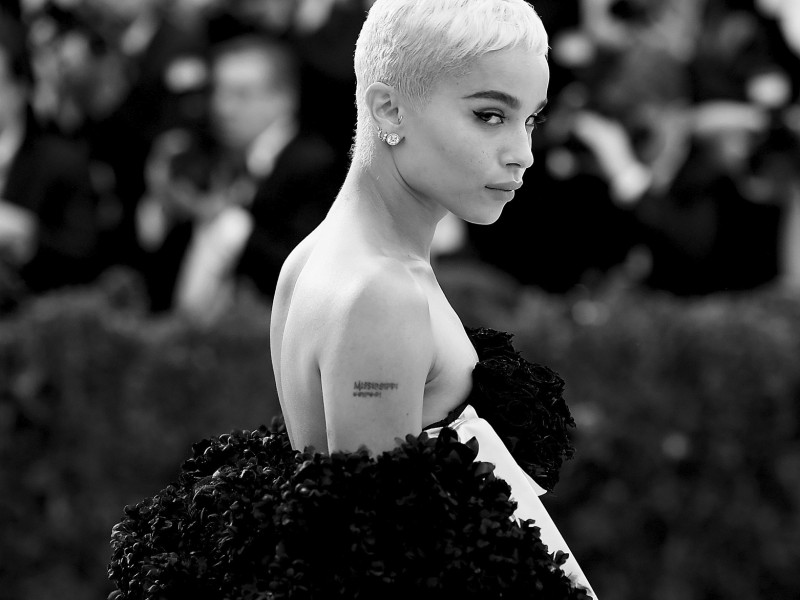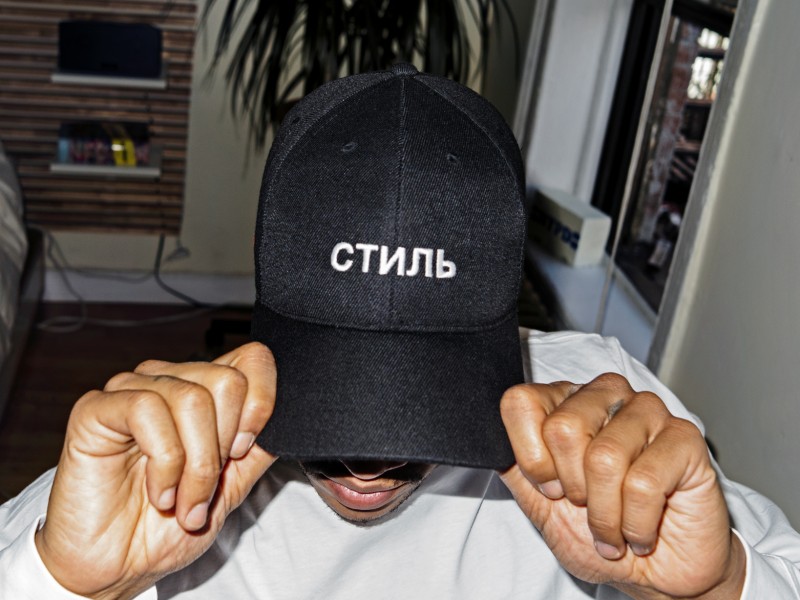The American Dream is the most powerful form of faith for those who live in the USA. It is also the driving force of many a fashion legend, from Roy Halston and Ralph Lauren to Jeremy Scott and Raf Simons, each of whom interpret the sartorial American songbook resonating with thousands, if not millions, of people who aspire to the greatest achievement: a lifestyle. In America, clothes don’t have the monastic spirituality that comes with the touch of a couturier. It’s altogether more effortless and sportier, with an inherent lack of froideur.
There’s Claire McCardell’s easy-breezy sportswear (the first athleisurewear of its kind) that transformed women’s lives in the 1940s, Hollywood costume designer Adrian Adolph Greenberg’s sinuous silk dresses that were moulded to Mae West’s platinum curves, Betsey Johnson’s youth quaking mini-clothes sold to The Factory at Paraphernalia in the 1960s. Plus, Halston’s jersey gowns made for dancing the night away at Studio 54, followed by Donna Karan’s working wardrobe and Calvin Klein’s minimalist fantasy embodied by Carolyn Bessette-Kennedy and a fresh-faced Kate Moss. What America has lacked in tradition and chic, it has made up for in successful characters that lived a life of glorious Technicolour and movement.
For more than just one generation, Alexander Wang is the messiah of a casual-luxe, sports-infused lifestyle that echoes the lowbrow culture of the 1990s and fuses it with an insouciant sense of modelesque refinement. Those ankle boots and leather miniskirts? That’s Wang territory. Those insanely studded grained leather holdalls and bucket bags? Wang. Remember those perfectly draped asymmetric t-shirt dresses and velvet numbers worn by Blake Lively and Erin Wasson? You guessed it: Wang. Certain mid-market fashion companies have made millions from interpreting those looks, but no one does downtown double-aughts quite like Wang.
Today, he is the CEO and Chairman of his namesake brand, following a three-year stint as creative director at Balenciaga. When Wang returned to New York re-energised, with experience at one of the industry’s most revered and elevated fashion businesses he was “an American brand of Asian descent with European training,” as he put it to Mark Holgate. As far as American dreams go, it doesn’t get much better.
During his sophomore year at Parsons School of Design, Wang got his big break with sweaters. In true millennial style, he put his novice designs in a suitcase and embarked on a road trip. Eventually, three small stores took the sweaters on consignment. They sold out a week later. Parsons, meanwhile, was expecting him to return for his junior year. He never did. Instead, ‘Alexander Wang’ the brand was born and the season after those sweaters hit the shop floor, Barneys came calling. The ambitious bright young thing that he was, however, Wang was disappointed upon seeing the collection merchandised by the department store; he wanted his very own section.
Never one to give up, Wang was determined to dominate the prized retail real estate. In 2007 he set about creating a full collection. Against the advice of his selling agents, who thought he was too ambitious, Wang launched his accessories division—the Donna Hobo and Brenda Chain remain bestsellers to this day.
Sarah Rutson, the former fashion director of Lane Crawford and subsequently Net-a-Porter, remarked to Sarah Mower that, “Starting out, his clothes were in that place in the middle that didn’t exist, but has become the huge growth area now—less expensive than designer but not the mass market.” Today, every buyer will wax lyrical about ‘advanced contemporary’. Could it be that Wang pioneered the idea all along?
What came next was probably most surprising to Wang himself. François-Henri Pinault of Kering—the luxury conglomerate that owns Balenciaga—came calling when creative director Nicolas Ghesquière exited the house. Wang was hesitant at first. “As an American designer coming to a French house that’s been around for a long time—and which has been built up by someone else—one of my biggest fears was that I’d be constantly up against a wall,” Wang told Mark Holgate shortly after his appointment at Balenciaga. Wang’s first collection was coldly received by those who still viewed the house through the lens of the founder, Cristóbal Balenciaga. “There were a lot of people who were … divided when I got the job; there was a lot of speculation as to what direction the brand would take.”
For his debut, there were jackets and coats cut with curving, gravity-defying shoulder lines; narrow trousers, made popular by Wang’s predecessor Nicolas Ghesquière, as well as long skirts in dark forest green and black; hourglass coats and column dresses, embroidered to resemble Brescia marble, a motif also found in the intarsia technique employed for sheared-mink jackets atop silk velvet trousers that were treated to resemble Guipure lace.
The young American found himself not particularly welcome on European soil. In fact, when he first visited the extensive Balenciaga archives in the Spanish port of San Sebastián—the hometown of the elusive couturier—the museum staff were less than enthralled. “They told me, ‘It’s the first time we’ve let outsiders into the archive’,” he told Holgate. “I said, ‘well, we’re not really outsiders’.”
Wang’s tenure at the house was short lived, mainly due to the difficulties of creative directorship in the 21st century. Executives are wary of designers, and following the scandal surrounding John Galliano and Christian Dior, designers too are wary of the monolithic hierarchies that they are indebted to. Wang subsequently returned to his natural environment: New York City.
In June 2016, his namesake brand announced that in addition to his role as designer, Wang would take on the role of chief executive and chairman, replacing his sister-in-law and mother, respectively. Today, the Alexander Wang business is said to turn over approximately $150 million in revenue with over three hundred employees. “When I got to Paris, it was a very different way of working. Not good or bad, but just different in the sense that everything was very silent,” he told The Business of Fashion in June 2017. “The sales team had their own conversation, the creative teams had their own conversations. I never worked in that way. It was always about transparency, over communication, and an intent to know each other’s expectations and goals.”
“When I came back, there was definitely a different viewpoint in how I wanted to be involved with the company,” he explained. “And the discussion of CEO, with my sister, had been something that was going on for a while—she had two kids, I was growing up and I wanted to take on more responsibilities—and it kind of just led to this. I’ve always had an innate sense of the business side, and that’s something that’s always interested me. Just having the creative, for me, it wasn’t enough. Essentially, when you’re a creative, you’re a dreamer, and when you’re a business person, [you’re focused on] execution. A dream is only a dream until you execute it.”
It all sounds fairly corporate compared to the label he started whilst still a student, inspired by his gaggle of downtown friends. However, what sets Wang apart is his sheer determination to build a business to rival his countrymen’s fashion forefathers: Calvin Klein, Donna Karan, Ralph Lauren et al. “It’s a lifestyle brand,” Wang told Hamish Bowles. “Because at the end of the day, fashion is style and style’s not just the clothes you wear, but it’s what you eat, where you go, who you hang out with.” As his success gained momentum, Wang’s own lifestyle became just as distinguishable as his business, thanks to the parties he would host in his Tribeca loft, complete with black velvet furniture, zebra skin rugs, fur throws, crocodile dining chairs, and mirrored walls. Friends such as Zoë Kravitz, Erin Wasson, Anna Ewers and Vanessa Traina—living embodiments of his grunge-luxe design ethos—would congregate there just in the same way that a generation of Studio 54 goers found their spiritual homeland in Roy Halston’s townhouse, with its grey suede walls, phalanxes of orchids and squared Warhol portraits.
When the Californian designer was asked by BoF how he would describe himself, it offered a glimpse into the psyche of his creative output. “Fun. Mysterious, I would hope. Hard-working. Celebratory. Very driven, I would say. Ambitious, you know? I’m very much into things that feel like cross-contextualising. Taking something very banal and making it interesting. Or taking something that is too precious, or too pretentious, and making it undone.”
There are now many facets to his brand, including the runway collections, a basics line and collaborations with Adidas and H&M. “We are aiming to be the most prominent digital lifestyle brand that redefines everyday luxury for our generation,” he continued. “That’s something we’ve been working towards, as we move from collection to collection and articulate more what our vocabulary is.”
In 2015, Wang was fashion’s only creative director to be listed on the Time 100, a respected list of global influencers who dominate cultural and social fascination. Not only were his stores selling mink hammocks, the Steven Klein-lensed advertising campaigns had reached the apex of high-low harmony. His reputation as a prophet of must-have accessories had been cemented. It also came at a time when many critics were questioning the designer’s ability to balance two acts and whether he had the longevity to sustain both.
For many, Wang will always be remarkable for the fact that he flipped the young-designer paradigm. Decades ago, young designers were impoverished and prized for their creativity. John Galliano and Hussein Chalayan frequently had seasons when they opted not to produce a collection at all—their supernatural creative flair was enough to keep people interested at a time of slower dissemination of fashion imagery and catwalk coverage. Wang, on the other hand, began his career by pragmatically providing stores and boutiques with the requisite number of items in each category, “which enabled us to have the money to grow the brand and do certain things that we probably couldn’t have done if we started from a purist design place,” he told Bowles. It’s a thoroughly modern approach, and one that can be felt in the wave of streetwear and sportswear-infused labels that have come to dominate high fashion.
For them, Wang paved the way. But more importantly, and in the true American spirit, he made building a viable business cool—and that’s certainly something worth looking up to.
For more visit www.alexanderwang.com
Related Features
-
242
-
-
-

